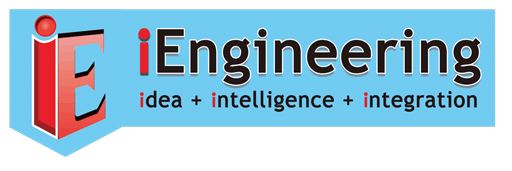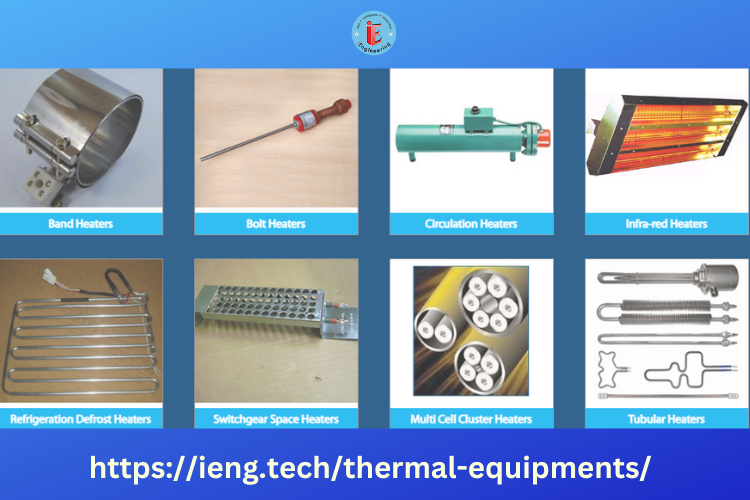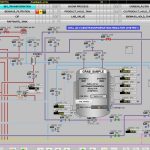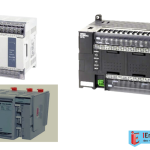Heating Elements
A heating element is a material or device that directly converts electrical energy into heat or thermal energy through a principle known as Joule heating.
Joule‘s first law (Joule-Lenz law) is used to describe the amount of heat produced from the flow of electricity in a conductor. This is expressed as,
P = IV or P =I²R
Electrical heating factors, in a sense, are nearly 100% efficient because all furnished strength is transformed into its supposed form. Heating factors won’t most effective behavior warmness however additionally switch strength via mild and radiation as well. However, that is the most effective actual for perfect resistors. Small losses may be derived from the inherent capacitance and inductance of the cloth which converts the electric strength into electric-powered and magnetic fields, respectively. Considering the complete heater machine, losses are from the dissipation of warmth into the outside surroundings from the procedure fluid or from the heater itself. Thus, the machine must be remoted to make use of all the warmness generated.
Heating Element Properties
Almost all conductors are capable of generating heat when an electric current is passed through. However, not all conductors are suited to be made into heating elements. The right combination of electrical, mechanical, and chemical properties is required.
- Resistivity – To produce heat, the heating element must have enough electrical resistance. However, the resistance must not be so high that it becomes an insulator. Electrical resistance is equal to the resistivity multiplied by the length of the conductor divided by the conductor cross-section.
- Oxidation Resistance – Heat generally accelerates oxidation in both metals and ceramics. Oxidation can consume the heating element which can decrease its capacity or compromise its structure. This limits the life of the heating element.
- Temperature Coefficient of Resistance – Note that the resistivity of the material changes with temperature. In most conductors, as temperature increases, resistance also increases. This phenomenon has a more significant effect on some materials than others.
Different Types of Heating Elements
- Air Process Heaters – As the name suggests, this type of heater is used to heat up flowing air. Air process heaters are basically heated tubes or pipes wherein one end is for introducing cold air while the other end is the hot air exit.
- Cartridge Heaters – These Heaters are used for processing Industries like Food, Plastic, Packing, pharmaceuticals, Dies and molds, heating gases and liquid, shoe machinery, labeling machinery, etc.
- Tubular Heaters – Tubular heaters are mostly used in industrial heating. They are used for heating liquids, solids, and gases through three types heating conduction, convection, and radiation. Tubular heaters are used for multipurpose heating application
- Space Heater – Space heaters are used inside the electrical and mechanical equipment enclosures to maintain the temperature and minimize moisture. It is a very small and portable heating device.
Factors to Consider in Selecting a Heater
- Watt Density: Watt density is the heat delivered by a heating element per unit area
- Temperature: The target operating temperature directly affects the watt density.
- Power Supply: The heating element must be able to operate with the available power supply
- Fluid Flow: From intuition, stagnant fluids are easier to heat with a controlled temperature than flowing fluids.
- Temperature Sensor Location: Conventional heaters come with a temperature sensor and a controller.
- Corrosion: Corrosion can be from the process fluid or the external environment.
Conclusion
- A heating element is a device or tool that immediately converts electric power into warmth or thermal power through the law of Joule heating.
- The maximum crucial heating detail traits are enough resistivity, excessive oxidation resistance, low-temperature coefficient of resistance, excessive toughness, and excessive melting point.
- Widely used heating factors are nickel-chromium alloy, iron-chromium-aluminum alloy, molybdenum disilicide, and silicon carbide. These are observed with the aid of using graphite and different refractory metals which normally have better oxidation rates.
- Aside from the heating detail, a heater includes the terminations, leads, insulation, packing, sheath, and seals. These warmers have numerous paperwork and configurations to healthy a selected application.
- Typical heater ordering specs are the strength or wattage, most running temperature, kind of procedure fluid, sheath material, and strength supply (voltage and frequency).
For more information please feel free to contact us at shila@iengaust.com.au & kirti@iengaust.com.au Or You can visit our website https://ieng.tech/thermal-equipments/




